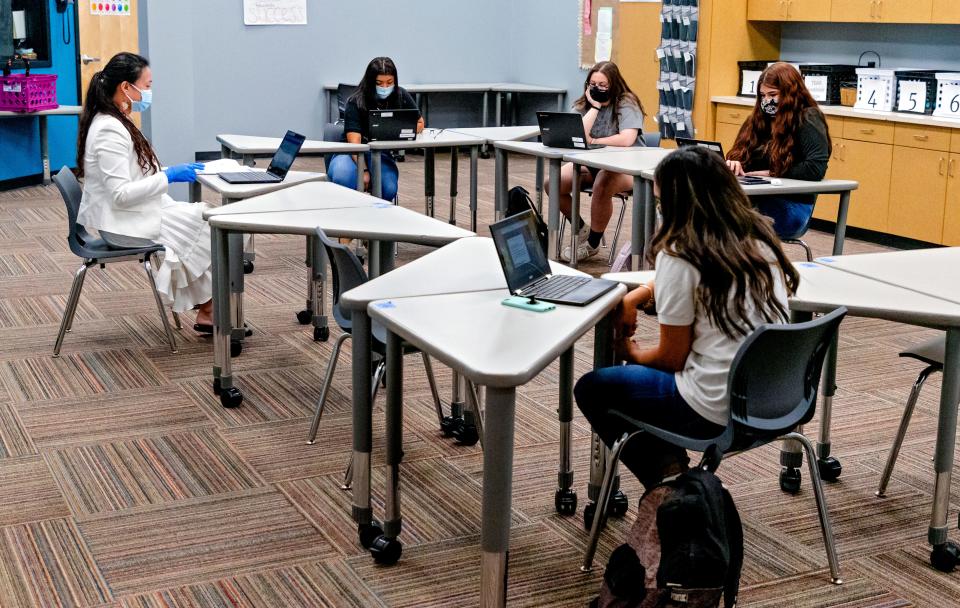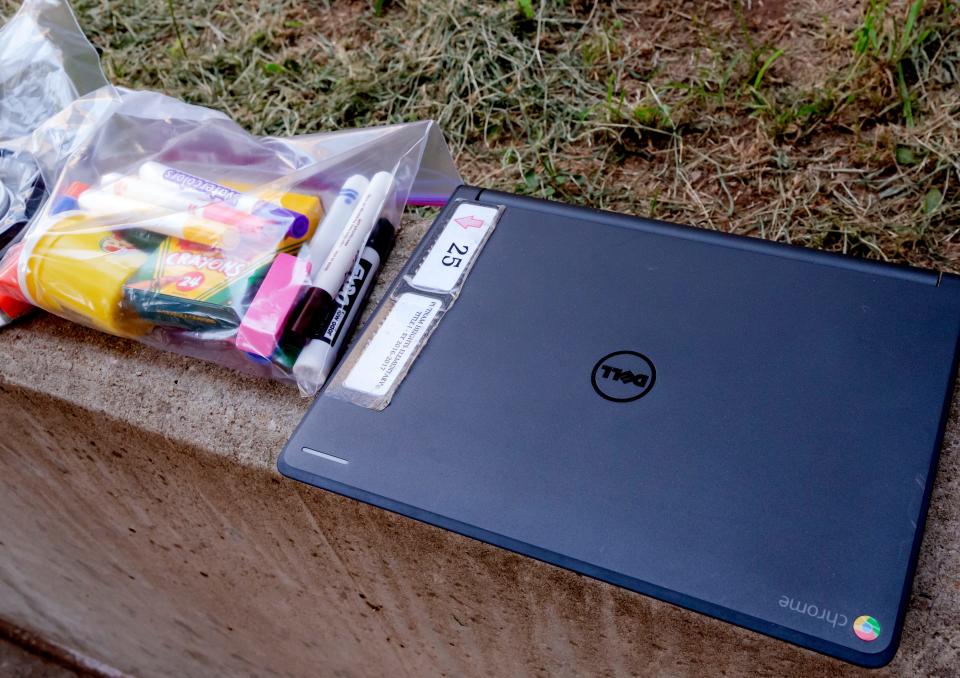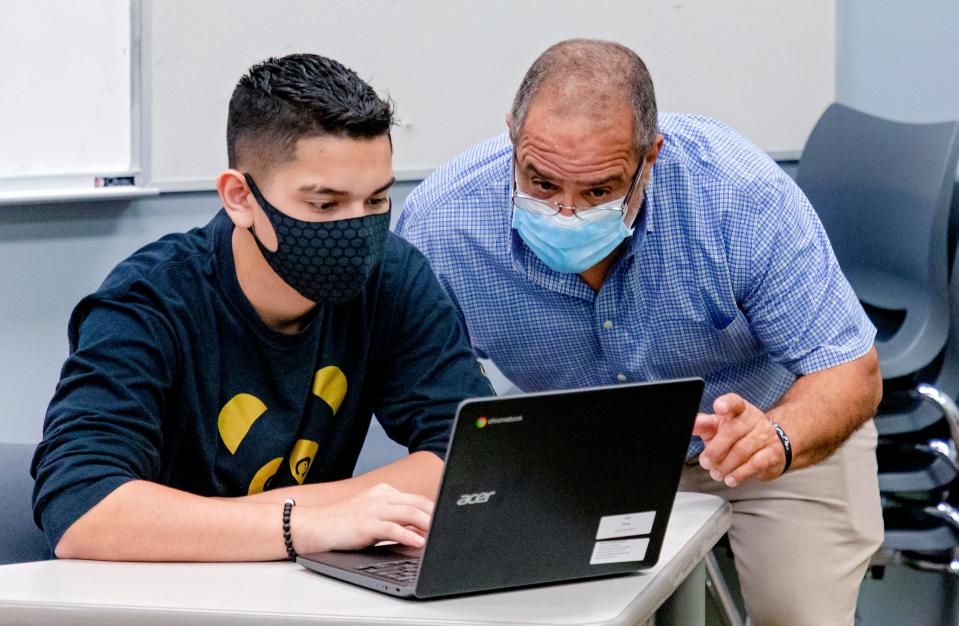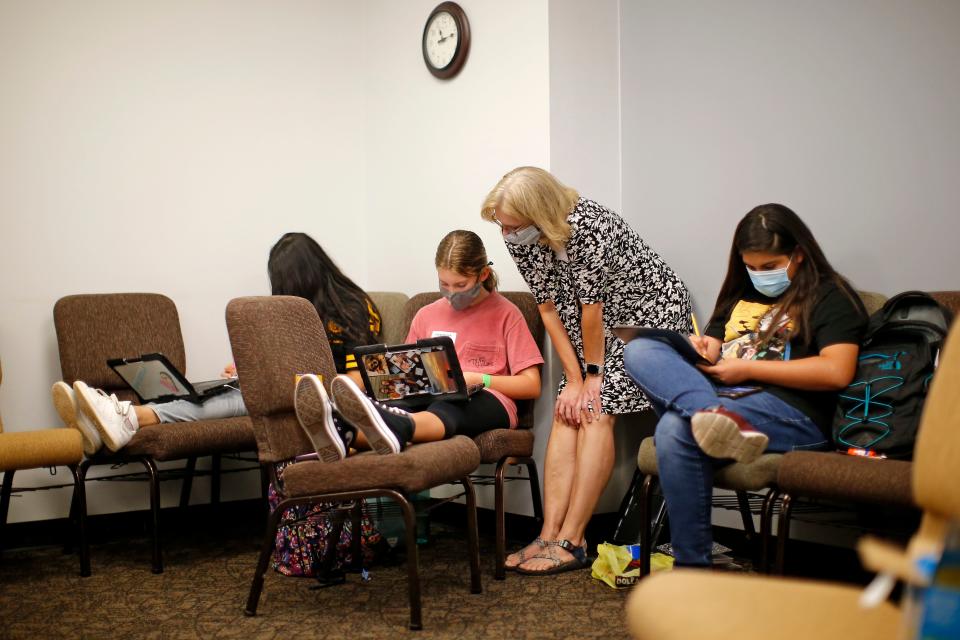Virtual learning 'here to stay' in Oklahoma education
Virtual learning abruptly rushed to the forefront of education in the COVID-19 pandemic after years of glimmering as a far-off possibility in many Oklahoma schools.
Now, school leaders say online education isn’t going anywhere.
Even the small Shawnee-area district of Bethel Public Schools intends to keep online options available to students, Superintendent Matt Posey said.
“It’s here to stay, especially after dealing with the pandemic,” he said. “Education won’t be what it was before, and in order to meet the needs of various students it’s going to stay around.”

Virtual schools, such as Epic Charter Schools, have existed in Oklahoma for a decade, but for many traditional school districts, implementing online learning on a widespread scale was unlikely to happen any time soon.
At least, that’s what they thought.
Then, COVID-19 entered the picture and brought shutdowns with it. A rush to purchase devices, hotspots and online curriculums ensued in 2020 so students could attend virtual classes and complete coursework from home.
The statewide closure of schools ended with the 2019-20 academic year, but many schools continued virtually in the following fall and winter months. Others returned to in-person learning but frequently used online tools to use for temporary school closures or student quarantines.
The Putnam City school district already was on its way to providing a take-home device to every student even before the pandemic.

Putnam City also was one of the few brick-and-mortar Oklahoma districts to have a full-fledged program before COVID-19 for students to attend school and earn a diploma completely online.
Enrollment in Putnam City’s online-only program boomed during the pandemic, as it did in virtual charter schools across the state, but the numbers have come back down to earth, said Cory Boggs, the district’s executive director of information technology.
The school system was aware even pre-COVID that virtual learning wouldn’t work for every student. Not every child is a self-starting independent learner.
Putnam City developed a screener years ago to help determine whether a student would be the right fit.
“I think it is a great program for a very specific group of students,” Boggs said. “Because it’s online and it’s self-paced, you really need a student who has good parental support at home, that is self-motivated because you have to just get it done within a semester.
“That’s one of the things we found out early on. It’s not a good fit for everybody, and we continue to see that even through COVID.”

Now with the virtual infrastructure in place, schools can shift online if necessary. Internet-based tools are still in use even for traditional face-to-face classes, like posting lessons and assignments online.
Some districts used virtual learning in times of inclement weather, but Bethel schools realized it might be better to have a snow day.
“The times we would have to go on virtual, we would have a lot of students who weren’t following or submitting work,” Posey said. “A lot of our students were struggling. The last round of inclement weather we just decided it was in the best interest of students and staff to use the hours built into our calendar (for snow days) instead of continuing with that virtual option.”
Online classes will still be available in Bethel, Posey said. Few students are choosing that option right now, he said, but the opportunity will remain open.
The district recently purchased devices for students to take home, and it’s nearing the stage to distribute them. Internet is available on Bethel school campuses, but Posey said some students still face a lack of rural broadband at home.
Unequal internet access is an issue in the urban core of Oklahoma City, too. Some families lack broadband, and others simply can’t afford home internet.
“The reality is when they go home some students don’t have internet,” Boggs said. “That is going to be a challenge in the future for all students. We always want to make it as much of an even playing field as we possibly can.”

So far, a federal program has helped Putnam City provide internet access to students for free if they don’t have Wi-Fi at home, Boggs said, but that funding is about to end.
The district could leverage other federal pandemic aid to continue at-home internet support, but those dollars, too, will cut off in the next few years.
Losing that extra funding could prompt students to rely more on community partners who provide internet, stay after school, or go to a local business or public site with free Wi-Fi, Boggs said.
“It’s definitely the future,” he said. “We need to get there as a society. (Internet access) just needs to be a utility and a service, and hopefully we’ll get that figured out.”
Reporter Nuria Martinez-Keel covers K-12 and higher education throughout the state of Oklahoma. Have a story idea for Nuria? She can be reached at nmartinez-keel@oklahoman.com or on Twitter at @NuriaMKeel. Support Nuria’s work and that of other Oklahoman journalists by purchasing a digital subscription today at subscribe.oklahoman.com.
This article originally appeared on Oklahoman: Virtual learning 'here to stay' in Oklahoma education

